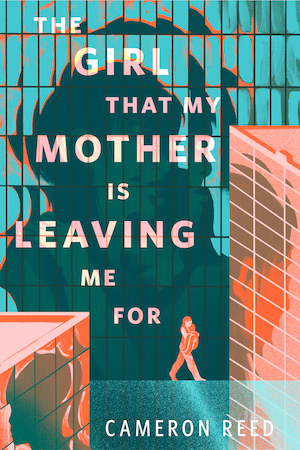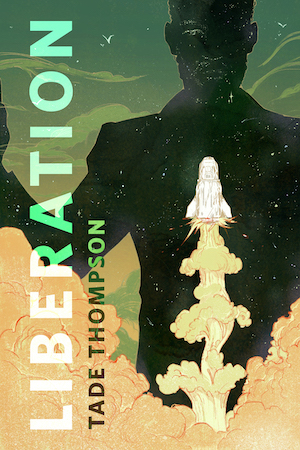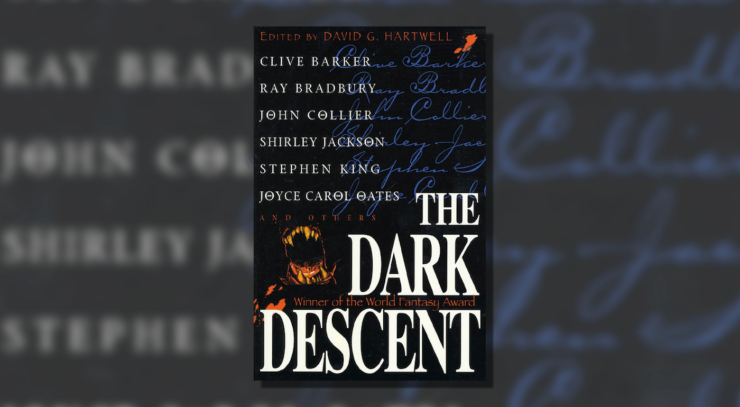Welcome back to Dissecting The Dark Descent, where we lovingly delve into the guts of David Hartwell’s seminal 1987 anthology story by story, and in the process, explore the underpinnings of a genre we all love. For an in-depth introduction, here’s the intro post.
This column was initially going to be a discussion of Stephen King’s “The Monkey,” but given the egregious use of racial slurs in the story, I have elected not to cover it as part of this column. The use of racist slurs by white authors is never okay, in my opinion, and particularly not the way King employs them here. It is dismaying that such a story was written and published, and it is equally confusing and dismaying that David Hartwell saw fit to include this specific story out of King’s rather prolific output, since he used multiple King stories (and even shouts out Danse Macabre) in the anthology. As “The Monkey” is repugnant and I feel that its inclusion here was a dereliction on both the part of King and Hartwell, I have declined to cover it.
Instead, I encourage the commenters and readers to recommend short horror stories by Black writers, with the constraint that the stories must have been published between 1880 and 1987, the time The Dark Descent covers. Should you wish to comment on this article, please consider including those recommendations below.
And now, since we’ve just passed the first anniversary of Dissecting The Dark Descent, I hope you’ll join me in looking back on some of what I’ve discovered since starting this project last spring…
It has been A Year.
Capitalization is kind of necessary, I think. While the day-to-day details of life tend to be similar from one point to the next, looking back on a year can be overwhelming, especially when that year is something of a roller coaster. When I pitched this column, I was sort of between steady work and hustling at a clickbait site writing strategy guides and overedited listicles. Then, with one simple email from Bridget McGovern, my long-time (and long-suffering) editor, that changed. Suddenly my life was 20th century horror stories. That’s a big shift for anyone to go through, and that this wild little idea—which came out of asking “does this massive well-regarded horror anthology I bought as a lit-crit desk reference live up to its reputation?”—lasted a whole year and 20,000 words (and counting!) is frankly astonishing.
Given that we’ve been with each other for about a year (and hopefully more), I thought it might be nice to reflect on a couple of my favorite columns, comment on the process of writing them, and share a few of the unexpected things I learned from putting classic horror stories on the dissection table. I hope you enjoy this trip through the past with me…
Intro: “The Reach” by Stephen King, and Why Reading Order Matters
While it was probably a noble effort for David Hartwell to arrange his work into three distinct streams with a section devoted to each, his attention to ordering his stories was a little inconsistent. This is probably why I focused on the authors more and on the arranger and his commentary less as the column has gone on. Still, since Hartwell repeatedly calls attention to his ordering in the book, what was initially a rambling comment to my dad one early December morning became an essay about how important it is for a short story collection to make a first impression. It’s weird going back to this and noticing how out-of-focus Hartwell eventually became as we’ve worked our way through the Table of Contents. Things became more about the specific authors and an attempt to discuss their work while only occasionally referring to their place in the anthology. I think that’s for the better. Hartwell’s a man of good taste and the works do have a kind of flow, but the stories are the real stars here.
Small, Sinister Details: “The Summer People” by Shirley Jackson
Somewhere in every story, there’ll often just be a single line or a phrase that’ll throw me. That’s the fun of fiction—you can read something a thousand times and because your brain is essentially processing large batches of words to make up a complex concept, something different might slip through the cracks each time. In this case, while there’s a lot of quiet menace to Jackson’s story, the thing that tied it all together was the opening scene, where the Allisons make fun of the locals. It’s an easy thing to miss, but the mean-spirited joke is an important part of the tableau—how many backwoods horror movies begin with someone making fun of the locals only to end up with a machete in the skull? Jackson’s style might offer a subtler approach to rural horror, but after this article, I started looking more for these small elements, the seemingly minor moments that would shift a story but played along the same kind of familiar tropes.
“Young Goodman Brown” by Nathaniel Hawthorne – The Horrors of Hypocrisy and Moral Polarity
When I saw “Young Goodman Brown” was on the horizon, Bridget was the one who reminded me of the Kate Beaton comic. Beaton’s work, a Bitter Karella Midnight Pals thread, and my own investigations into Hawthorne’s literary canon led me to think about the way he uses Puritans to construct a critique of guilt and moral rigidity. Two of my unstated goals in tackling this column are to show how horror is a less reactionary genre than people give it credit for, and how throwing a blanket over the past and waving it away as “it was a backward time and everything about it was awful” is an unhelpful oversimplification. Nathaniel Hawthorne wasn’t a man ahead of his time, but this story sees Satan implicating Brown in Colonial-era atrocities and focuses on the very human struggle of needing to be a good person while also processing a national and personal history of monstrous acts. That we’re still struggling with issues and traumas someone wrote about in the 1800s is disappointing, but the fact that someone two hundred years ago managed to get several things right about the human condition speaks to a deeper complexity we should expect and demand from the past.
The Call is Coming From Inside the House: “If Damon Comes” by Charles L Grant
I am still frustrated by the fact that Charles L. Grant, a man local to my home state (New Jersey being a very strange place), wrote about a suburb based on suburbs in the region where I grew up, and then promptly set the action in Connecticut. “If Damon Comes” was a weird story for me because it felt unnervingly familiar in many ways, which I think is why I like it. I feel like I know this story. It also made it hell and a half to write about until finally I managed to make the Silent Hill connection, as well as Grant’s use of Oxrun Station as a setting for his stories. The idea that something supernatural emanating from a nexus like Oxrun reached out and connected with Frank’s guilty conscience immediately gave the article a focus. There’s a weird undercurrent of processing guilt in the way I interpret a bunch of these stories, and I think it’s because I operate on the idea that the moment someone stops struggling with themselves is the true moment they become a monster.
The Rot Goes Deep: “The Fall of the House of Usher” by Edgar Allan Poe
At the risk of bringing down the mood, this one felt a bit personal. I can’t play the guitar, I’m nonbinary, and my family tree is suitably genetically varied, so suppose I have the advantage over Roderick Usher. I can’t deny there’s some self-deprecation going on in the article regarding the story’s focus on Roderick’s loneliness, resistance to change, living in a place where humidity’s an issue, and other concerns along those lines. With myself as a starting point, I just thought about how I’d talk about myself if I had some distance, and charged full speed ahead. Mental illness is a thing that can affect one’s environment and set up a feedback loop if left unchecked, and it’s a persistent worry of everyone who suffers from some form of depression or trauma that they’ll somehow be “stuck like this.” It’s a testament to Poe’s skill as a writer that he was able to weave elements gothic horror and witty potshots at the privileged into grim satire, and still create an honestly very real portrait of mental illness.
And on that note, we’ve made it through a year! I’d like to thank you all for coming along with me as I continue working my way through the horror canon. As you can see from the picture below, we’ve still got a ways to go, so please, join us in another two weeks when we stop by a shopping mall in Michael Bishop’s urban ghost story, “Within the Walls of Tyre.”
Let us know if you have any favorite stories or discussions from the last year not covered above, and again, I would please ask that you please recommend your favorite horror story by Black authors (published between 1800 and 1987) that Hartwell could have included in this volume in place of “The Monkey.” See you in two weeks!











First time I encountered Mr. Hartwell was through the SF Book Club sending me (unexpectedly) a copy of his anthology Masterpieces of Fantasy and Enchantment. I did not send it back and memorized the name “Hartwell” as a sign of good reading ahead.
Copies of Weird NJ are available by the door, upon exit from the auditorium. Highly recommended, even to non-Jerseyites.
And if we need an African-American author to step in and step up for Mr. King, may I suggest Ms. Tananarive Due? She is too late for Hartwell, but her collection Ghost Summer: Stories is a favorite of mine. If I stick to the Hartwell timeline, we could get something of Octavia Butler, like her body horror story “Bloodchild”.